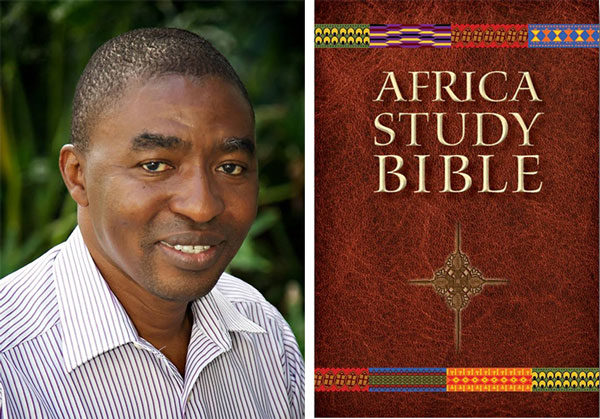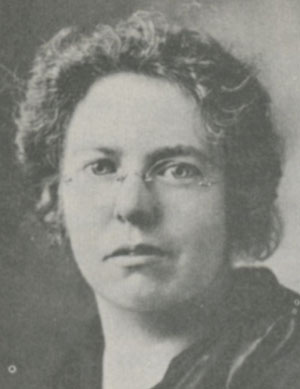26 Apr On This Day in UB History: April 26 (Bishop Barnaby)
 In 1889, the year of the division in our denomination, we elected four bishops. Three of them–Milton Wright, Halleck Floyd, and Horace Barnaby–served together for the next 16 years. All three left office in 1905. And all three died in 1917.
In 1889, the year of the division in our denomination, we elected four bishops. Three of them–Milton Wright, Halleck Floyd, and Horace Barnaby–served together for the next 16 years. All three left office in 1905. And all three died in 1917.
Horace Barnaby was born April 26, 1823, in New York. There is nothing particularly noteworthy about his service to the United Brethren church, but he was a solid guy who served faithfully and was respected by other ministers.
Barnaby lived an interesting life, and suffered a lot of hardships. Nothing was handed to him.
A year after Barnaby was born, his father went on a business trip and was never heard from again. His mother remarried several years later, after which he lived with an aunt for a while, and then, from age ten, with his grandparents. Once a year, he would walk 18 miles to visit his mother.
Barnaby grew up knowing hard work. He was teaching school at age 17, and two years later, he bought from his uncle some frontier land near Hillsdale, Mich. He walked from New York to Michigan, hunted for food, and cleared the land for a home (during his lifetime, he would clear land for three different farms). He continued teaching school, and married one of his students, Lydia.
In 1850, at age 27, Barnaby joined the California Gold Rush. He sold the farm, found a place for his family to stay, and headed west with a friend. It took them four months to reach California; they braved Indians and scorching heat. But they did well. A year later, they returned to Michigan with $4000 saved up. But while sleeping aboard a steamship, all of their belongings were stolen. It was a wasted trip. Back to farming.
Barnaby was converted in 1852, and became a circuit-riding preacher in the Methodist Protestant church. In 1858, he switched to the United Brethren church, and was ordained in 1863.
Lydia died in 1855, soon after an infant son died. He married Jane in 1856, but she died six years later. He then married Jane’s sister, Susan…who died a year later in childbirth, followed soon thereafter by the infant.
With the Civil War at its height, Barnaby found homes for his two daughters, now ages 15 and 18, and tried to enlist. He was rejected three times, and never understood why, except maybe that he had a frail appearance. He went back to pastoring in Michigan Conference. In 1864, he married Sophia. This one lasted. They celebrated their 50th anniversary in 1914.
Barnaby was one of the men who guided and rebuilt the United Brethren Church after the split. We don’t know much about his contributions, but since he was a bishop, we can assume he played a vital role and made a lot of decisions. He and Bishop Halleck Floyd left office in 1905 following an unfortunate controversy over the publishing house; they crossed swords with Milton Wright and lost.
Horace Jr. wrote that during the winter when his father was 83, he would go into the woods each morning with his axe, because “he felt better satisfied each day to be of some use in the world.” That winter he chopped thirty cords of wood, and when spring came, he dug and tiled 220 yards of ditch.
Barnaby died on March 1, 1917, at age 94. He left behind some impressive kids. Alvin became an ordained UB minister and taught for a while at Huntington College (then called Central College). Horace became an attorney in Grand Rapids, and served in the state legislature for several terms. Milton attended Huntington College for three years, and worked in the Michigan state auditor’s office. James managed the Barnaby farm. Daughter Addie graduated from Huntington College and taught school in Grand Rapids.

 Date: May 5-7, 2017
Date: May 5-7, 2017




 On April 19, 1929, Ellen Rush (right) concluded six years as a missionary in Sierra Leone.
On April 19, 1929, Ellen Rush (right) concluded six years as a missionary in Sierra Leone.
 Progress is being made at Mattru Hospital in Sierra Leone. Global Ministries staff member Matt Asher (right) is working with others to prepare the site for the 100kVA solar array and water purification/packaging project. Solar panels, batteries, packaging equipment, and supplies are on their way and will be installed in the coming months. The project will eventually provide electricity to the hospital and sell excess electricity to a limited number of consumers in the community.
Progress is being made at Mattru Hospital in Sierra Leone. Global Ministries staff member Matt Asher (right) is working with others to prepare the site for the 100kVA solar array and water purification/packaging project. Solar panels, batteries, packaging equipment, and supplies are on their way and will be installed in the coming months. The project will eventually provide electricity to the hospital and sell excess electricity to a limited number of consumers in the community.